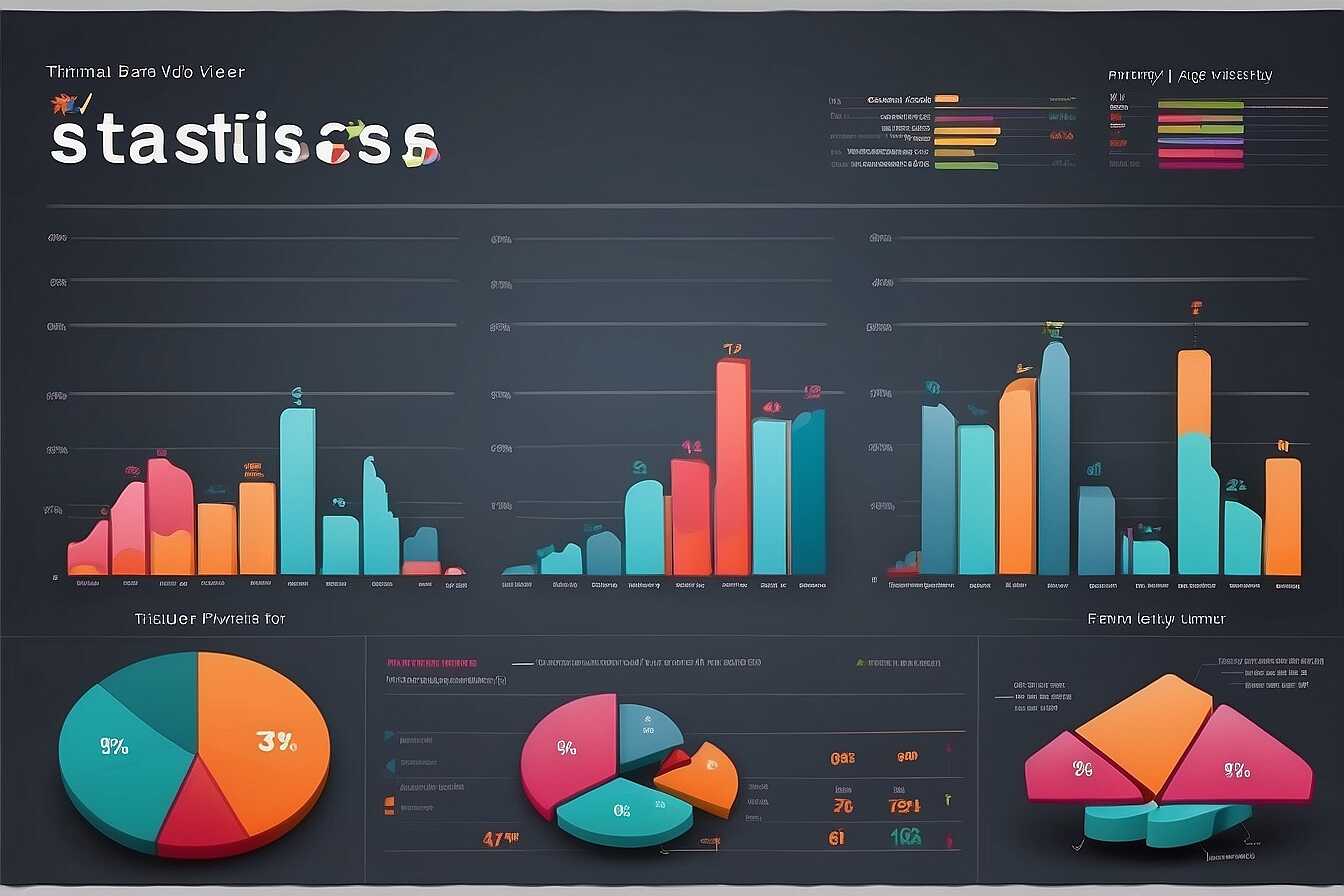Mobile-friendly content strategies are essential for boosting your website’s search visibility in today’s digital landscape. By optimizing your content for mobile users, you can reach a broader audience and improve user engagement. At Metrics Rule, we understand the vital connection between effective mobile content and SEO success, enabling your website to rank higher and attract more visitors. This article will share practical tips and best practices to enhance your mobile content strategy and visibility.
Importance of Mobile-Friendly Content for Search Visibility
Mobile-friendly content is essential in today’s SEO landscape because it directly affects how websites rank on search engines like Google. The increasing reliance on mobile devices for browsing means that a significant portion of web traffic comes from smartphones and tablets. In 2023, mobile traffic accounted for over 54% of total web traffic. Websites designed for mobile usability enhance user experience and keep visitors engaged, ultimately boosting search visibility and conversion rates. Such optimization includes ensuring that content loads quickly and is easily navigated on smaller screens, which is crucial for competing in today’s digital market.
The Role of User Experience in Mobile Optimization
User experience plays a critical role in mobile optimization since it impacts how easily users can access content on their devices. Mobile-friendly websites often feature responsive design, which adjusts layout and graphics for differing screen sizes. This improves reliability and enhances performance, making it comfortable for users to browse. When conducting user testing, sites that provided an excellent mobile experience reported higher retention rates and engagement levels. Additionally, optimizing for mobile ensures better crawling and indexing by search engines, which helps align with SEO best practices. As a result, prioritizing mobile functionality can solidify a website’s position in SERPs and facilitate better user interactions.
Implementing Responsive Web Designs for SEO Benefits
Responsive web design greatly enhances user experience across all devices, which is essential for improving SEO outcomes. This design approach ensures that websites adapt seamlessly to various screen sizes, enhancing accessibility. Studies show that over 50% of global web traffic now comes from mobile devices, making it vital to have a mobile-optimized layout. A responsive design also reduces bounce rates and increases user engagement, as visitors find content easier to browse. Furthermore, Google prioritizes mobile-friendly sites in its search results, meaning responsive designs directly impact search visibility. Metrics Rule leverages these strategies to boost website performance for clients in Vancouver, ensuring they remain competitive.
Key Features of Responsive Web Design for SEO
When implementing responsive web design, focusing on essential elements can significantly enhance SEO performance. Features such as flexible grid layouts and fluid images play a crucial role in ensuring content looks good on any device. Incorporating CSS media queries allows customization for different screen sizes, which helps improve user experience. Additionally, having a single URL for content increases crawl efficiency, aiding in search engine indexing. Implementing these elements is proven to enhance website performance and user satisfaction. As you refine your responsive strategy, continuously testing and optimizing based on analytics will help keep your site aligned with evolving best practices.

Crafting Mobile-Focused Content for Maximum Engagement
When crafting mobile-friendly content, essential techniques include using concise messaging that quickly conveys your message. Avoid long paragraphs, as they can lose the reader’s attention. Engaging formats like bullet points or short videos provide a more appealing experience for mobile users. Testing different approaches helps identify what resonates best with your audience. According to recent studies, over 50% of web traffic now comes from mobile devices, emphasizing the importance of prioritizing mobile design. Creating content specifically designed for mobile audiences will not only enhance user interaction but will also improve search visibility.
Essential Content Formats for Mobile Engagement
To maximize user engagement on mobile platforms, consider using formats such as infographics, short videos, and interactive quizzes. These mobile-friendly formats are designed to capture attention quickly and are ideal for mobile users who prefer quick consumption of information. Infographics present data in a visually appealing way, making it easier to understand complex information at a glance. Videos that are fewer than two minutes long can deliver concise messages effectively. Additionally, quizzes allow for user interaction, making the experience more engaging. By utilizing these formats, you can enhance the overall reliability and performance of your mobile content strategy.
Key Statistics for Optimizing Mobile Content
- According to Google, over 50% of web traffic comes from mobile devices.
- Mobile-friendly websites can result in a 20% increase in visitors.
- Pages that load under 3 seconds are 32% more likely to keep users engaged.
- Optimizing for mobile can improve search visibility by up to 55%.
- 85% of users expect mobile sites to load as fast as desktops.
- Mobile-friendly sites see a 25% lower bounce rate than non-optimized sites.
- Google now prioritizes mobile indexing for ranking websites.

Improving Page Load Speed to Enhance User Experience
Improving page load speed on mobile devices involves several essential techniques. First, optimizing images is critical. Large images can significantly slow down loading times. Use formats like JPEG for photos and PNG for graphics. Also, consider implementing responsive images that serve the right size based on the user’s device. Additionally, minimizing HTTP requests helps. This means reducing the number of elements on your page that require loading. Utilizing browser caching can enhance repeat visits, allowing users to access content faster. Lastly, leveraging Content Delivery Networks (CDNs) can provide higher performance and reliability, especially for mobile-friendly sites.
Effective Image Optimization Strategies for Mobile Devices
Image optimization strategies are crucial for enhancing mobile page load speed. Compressed images reduce file size without sacrificing quality, which is essential for mobile users. Using modern formats like WebP can deliver better compression rates. Also, implement lazy loading, which delays loading images until they are in view. This method helps improve initial load times and overall user experience. By using these techniques, you enable efficient loading and ensure that your mobile site performs exceptionally well in search rankings.

Leveraging Structured Data to Improve Mobile Search Visibility
Structured data significantly enhances mobile SEO by improving search results appearance and increasing click-through rates. Using structured data helps search engines understand your content better. This understanding can lead to more relevant search snippets, which often attract more clicks. For businesses, especially e-commerce sites, utilizing structured data like product schemas, review ratings, and FAQ schema can provide essential information directly in search results. Results show that click-through rates can increase by over 30% on mobile devices when structured data is implemented correctly.
Types of Structured Data for Mobile Optimization
There are several types of structured data that can improve search visibility for mobile users. E-commerce websites should implement product schema to showcase price, availability, and ratings in search results. Local businesses benefit from local business schema, highlighting address, phone number, and customer reviews, which can enhance visibility in local searches. Implementing FAQ schema helps answer user questions directly on search results, boosting interaction. Additionally, review schema can showcase customer ratings prominently, improving trust and click-through rates. These types of structured data create a reliable framework for search engines, ensuring better crawling and indexing, thus enhancing overall mobile SEO performance.
Advantages of Implementing Mobile Optimization Techniques
- Improved user engagement leads to higher conversion rates.
- Mobile optimization enhances visibility in search engine results.
- Better user experience builds brand loyalty and trust.
- Faster loading times reduce site abandonment, keeping visitors on your page longer.
- Responsive design helps accommodate various screen sizes for all users.
- Analytics show that mobile-friendly sites have lower bounce rates.
- Search engines reward mobile optimization with better ranking opportunities.

Understanding and Adapting to Mobile-First Indexing
Mobile-first indexing is an essential concept in SEO, where search engines like Google prioritize the mobile version of a website for indexing and ranking. As of 2023, approximately 54% of web traffic comes from mobile devices. Businesses must adapt by ensuring their mobile content is optimized, easy to navigate, and delivers a quality user experience. This includes optimizing images, improving loading speeds, and ensuring that text is readable without zooming. Content that is mobile-friendly enhances search visibility significantly, making it essential for SEO strategies. Businesses need to review their current mobile performance regularly to ensure they meet these indexing standards.
Key Factors for Optimizing Mobile Content
When optimizing for mobile-first indexing, there are several key factors to consider. First, ensure your website is responsive, meaning it adjusts seamlessly to different screen sizes. Next, focus on improving loading speed. Research indicates that a one-second delay in loading time can decrease conversions by 7%. Efficient use of images and streamlined code can significantly enhance loading performance. Additionally, make sure your content is mobile-optimized, which includes using clear and concise language. Implementing structured data, such as Schema markup, also helps search engines crawl and index your content more effectively, further boosting your search visibility.
Key Metrics for Evaluating Mobile-Friendly SEO Strategies
To effectively evaluate mobile-friendly SEO strategies, essential metrics include mobile page speed, user experience metrics, and mobile usability scores. Mobile page speed significantly impacts user experience and retention. A fast-loading page reduces bounce rates and enhances overall engagement. User experience metrics, like bounce rate and average session duration, provide insights into how visitors interact with your mobile site. Additionally, tracking mobile usability scores through Google’s Mobile-Friendly Test helps identify technical issues that may hinder user engagement. In 2025, aim for at least 60% of your website traffic to come from mobile users to ensure competitive search visibility.
Improving Mobile Usability and Page Speed for Better SEO
Improving mobile usability and page speed is vital for enhancing search engine performance. Targeting mobile page speed, ideally under three seconds, can dramatically enhance user satisfaction. Prioritize responsive design elements that adapt smoothly to various screen sizes. Tools like Google PageSpeed Insights provide reliable data on your site’s performance and offer specific recommendations. Regular testing and evaluation of mobile usability scores ensure that your site meets the evolving standards of search engines. Integrating these factors not only improves your rankings but also enhances user experience, ultimately translating into increased conversion rates for e-commerce sites.
Demographics and Use Cases for Mobile Content Strategies
- Small business owners benefit from mobile strategies to reach local customers quickly.
- Content creators use responsive design to engage wider audiences on-the-go.
- E-commerce brands leverage mobile optimization to drive online sales effectively.
- Non-profits reach younger audiences through mobile-friendly content strategies.
- Travel and hospitality sectors find mobile users seeking instant booking options.
- Service-based businesses enhance customer interactions through mobile-friendly websites.
- Education platforms optimize content for students accessing information via smartphones.
Essential Tips for Continuous Mobile Content Optimization
Ongoing mobile content optimization involves several key components. First, regularly update your content to ensure it is relevant and engaging for users. Implement A/B testing strategies to compare different versions of mobile content; this helps identify which elements perform best. Additionally, analyze user engagement data using tools like Google Analytics to understand how users interact with your mobile site. Businesses that embrace these techniques often see a significant percentage improvement in search visibility over time. This reliable approach helps enhance your website’s performance, ensuring that users have a great experience.
Effective A/B Testing Strategies for Mobile Content
To implement effective A/B testing for your mobile content, start by defining clear goals for what you want to achieve. For example, you may want to test different headlines, button placements, or call-to-action phrases to see which performs better. Use a reliable A/B testing tool that integrates with your analytics, such as Google Optimize. Ensure you collect enough data to make informed decisions – aim for at least a 95% confidence level. By analyzing results carefully, you can enhance user experience, improve engagement, and ultimately boost your search visibility.
